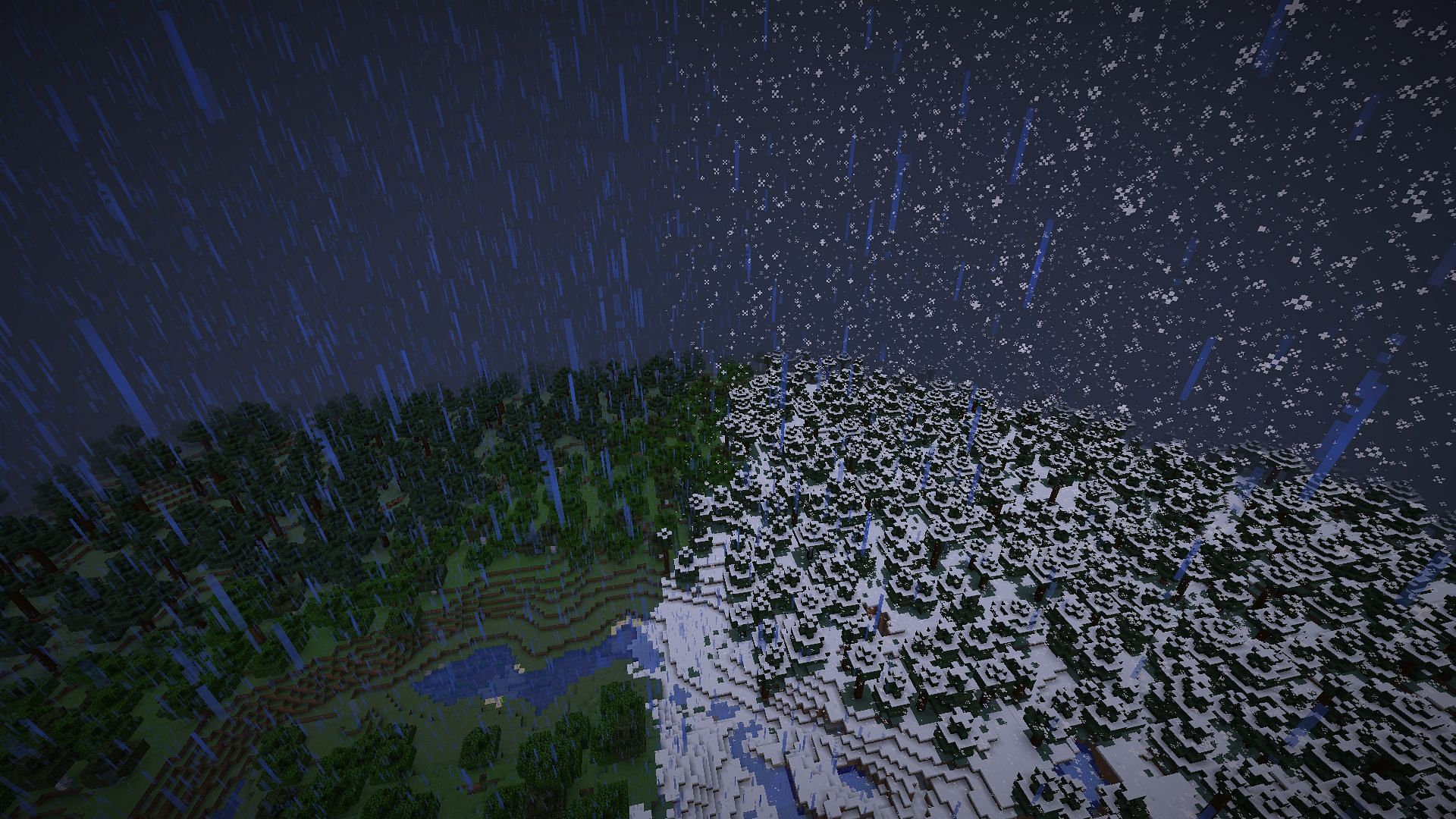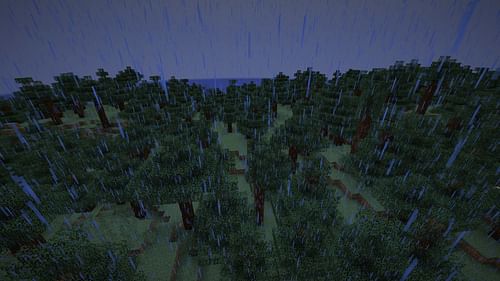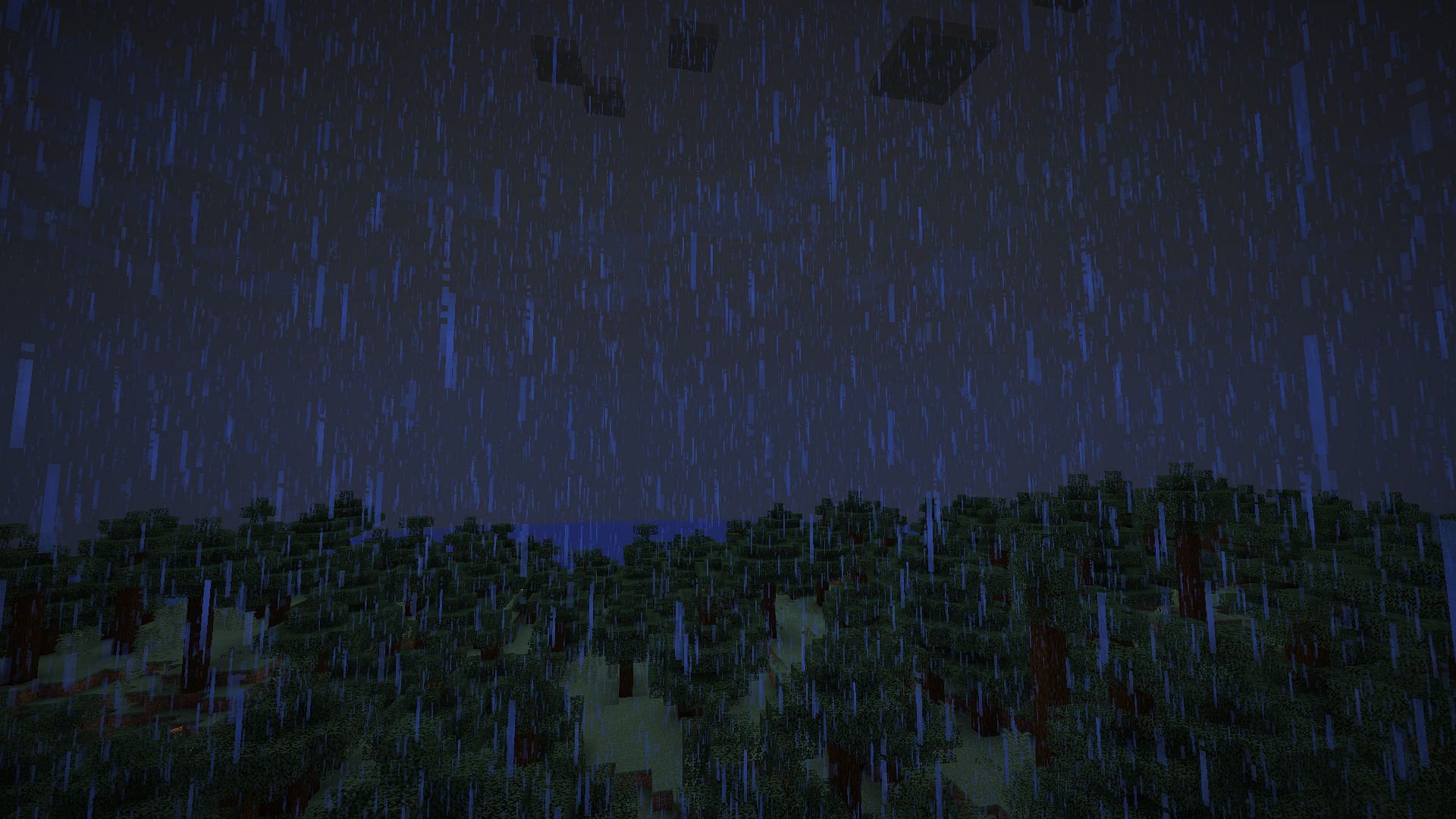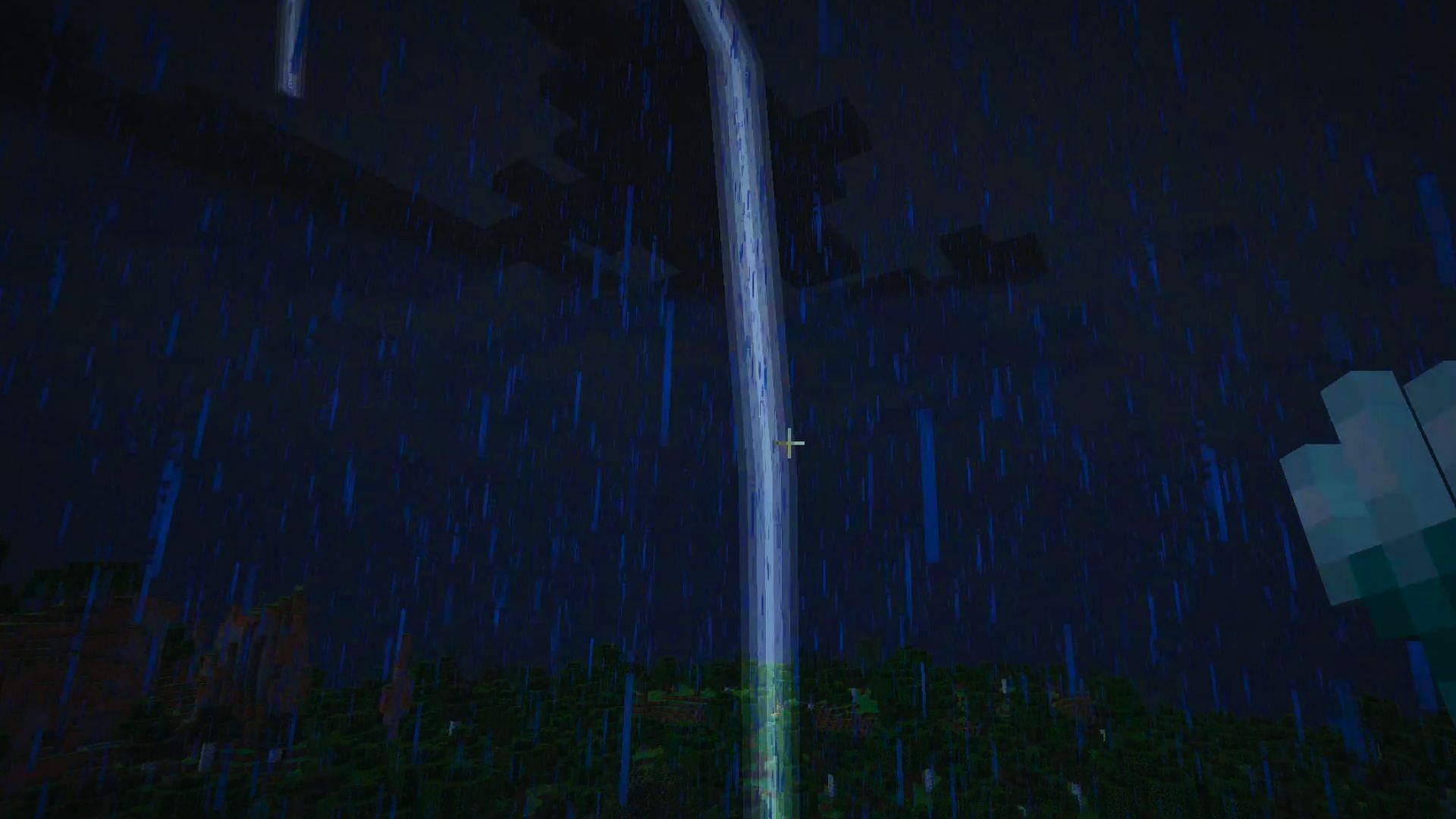
A guide to understanding Minecraft's weather system
Weather in Minecraft adds a layer of atmosphere to the game by subtly changing the world around you. Rain, snow, or even storms with thunder and lightning can occur depending on the biome and other variables. Every in-game day, there is a certain probability of rain due to the randomness of the weather cycle. The probability of rain increases with each game day that passes without rain.
In certain elevations and biomes, it snows instead of rain. Depending on temperature and height, snow can build up in cold, snowy, and other biomes. Any biome in Minecraft can experience thunderstorms, which are usually accompanied by lightning.
Guide to all four types of weather conditions in Minecraft
1) Rain

Rain occurs in cooler biomes around the world but not in savanna or desert biomes due to their hotter climates. Nor does it take place in the End or the Nether. During the day, rain lowers the sun's light level to twelve, a three-point drop. At night, the light level will remain the same.
Rain can extinguish most fires, including flaming arrows, and protect mobs that are vulnerable to sunlight, such as zombies and skeletons. However, it cannot extinguish fires on magma blocks, campfires, or netherrack. Water-vulnerable mobs, such as endermen and snow golems, take damage from rain.
In Java Edition, when it rains in a biome, the sun, moon and stars become invisible, even in biomes where rain is not occurring. In contrast, they remain visible in Bedrock Edition.
2) Snow

Snow falls in biomes with temperatures below 0.15 and at elevations above Y level 120. With Y level 153 marking the beginning of the lowest snow layer, the snow line's height is randomized. Like rain, snow reduces light levels during the day. In Bedrock Edition, snow-covered tree leaves turn entirely white. Unlike rain, snow does not extinguish burning mobs, such as skeletons or zombies.
3) Thunderstorm

Thunderstorms are rare, with only a 1.44% chance of occurring. For a thunderstorm to happen, the timers for both rain and thunderstorms must activate simultaneously. Thunderstorms drastically reduce light levels to ten during the day, and to spawn hostile mobs, the game treats the light level as zero.
4) Lightning

Thunderstorms frequently and randomly produce lightning. When lightning strikes, it can start fires and even activate Nether portals. Rain usually prevents these fires from spreading. Although lightning does not naturally occur in hot or dry biomes, it can be summoned by throwing a channeling trident during a thunderstorm.
Lightning strikes can also cause transformative effects. When struck by lightning, creepers become charged creepers, greatly increasing the power of their explosions. Pigs transform into zombified piglins, villagers turn into witches and mooshrooms change into their brown variant. There is also a chance for a skeleton horse to appear as a trap and summon skeleton horsemen.